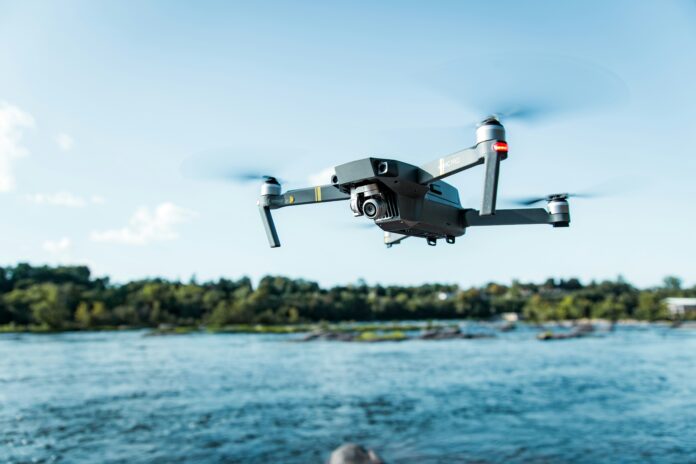Drones have completely changed the landscape of photography and videography by providing breathtaking, hitherto unachievable aerial views. Getting great aerial footage requires selecting the correct drone camera, whether you’re a professional photographer, filmmaker, or hobbyist. The features, advantages, and possible disadvantages of the top drone cameras for aerial photography and videography are examined in this article.
DJI Phantom 4 Pro V2.0
Features and Benefits
A popular option for aerial photography and videography, the DJI Phantom 4 Pro V2.0 is renowned for its superb camera quality and cutting-edge features. With its 1-inch, 20MP sensor, it can record 4K video at 60 frames per second and take incredibly detailed still photos. The rolling shutter distortion that can happen when taking pictures of moving objects or when flying at a high speed is eliminated by the drone’s mechanical shutter.
To improve flight stability and safety, the Phantom 4 Pro V2.0 also has obstacle avoidance sensors on all sides. Longer shooting sessions are possible thanks to its remarkable flight time of up to 30 minutes on a single battery charge, and a dependable live video feed is guaranteed by the DJI Lightbridge HD video transmission system.
Drawbacks
The Phantom 4 Pro V2.0 is less portable than some other drones due to its size and bulk, even with its exceptional features. In addition, hobbyists or those on a tight budget might take its price point into account.
DJI Mavic Air 2
Features and Benefits
For both amateurs and pros, the DJI Mavic Air 2 is a great option because it perfectly balances portability and performance. It has a 1/2-inch 48MP sensor that can record HDR and 4K video at 60 frames per second, guaranteeing clear, detailed footage. SmartPhoto and Hyperlapse, two of the Mavic Air 2’s clever shooting modes, make it simple to take imaginative, high-quality photos.
This drone provides a smooth and safe flying experience with a maximum flight time of 34 minutes and advanced obstacle avoidance technology. Because of its small size and foldable design, it is very portable and perfect for shooting while on the go.
Drawbacks
Despite having fewer features than the Phantom 4 Pro V2.0, the Mavic Air 2’s sensor is smaller, which could lead to somewhat worse low-light image quality. Furthermore, while still having great range, its video transmission capabilities are not as sophisticated as those of certain higher-end models.
Autel Robotics EVO II
Features and Benefits
The remarkable camera options on the Autel Robotics EVO II, which include the ability to record 8K video, make it stand out. With its 1/2-inch 48MP sensor, this drone produces crisp, detailed images. Its 8K video capability offers unmatched post-production clarity and versatility.
One of the longest flight durations in its class, the EVO II provides omnidirectional obstacle avoidance for improved flight safety. The drone is a reliable and portable choice for aerial photography and videography because of its foldable design and sturdy construction.
Drawbacks
Not every user may require the high-resolution 8K video capability, and managing and editing the resulting large file sizes can be difficult. Furthermore, the cost of the EVO II is relatively high, which might be a factor for purchasers on a tight budget.
Parrot Anafi
Features and Benefits
For individuals seeking a lightweight, portable, and highly effective aerial camera, the Parrot Anafi is an excellent choice. It has a 1/2.4-inch 21MP sensor that produces beautiful still images as well as 4K HDR video. The Anafi’s special 180-degree tilt gimbal enables smooth filming and imaginative shooting angles.
The Anafi is portable and rapidly deploys thanks to its small, foldable design and up to 25 minutes of flight time. It’s a great option for both novice and expert drone pilots due to its easy-to-use interface and simple controls.
Drawbacks
Some of the more sophisticated obstacle avoidance features found in other drones are absent from the Parrot Anafi, which could be dangerous in intricate flying situations. Its flight duration is also shorter than some of its rivals, despite still being respectable.
DJI Inspire 2
Features and Benefits
Professional-grade drones like the DJI Inspire 2 are made for serious photographers and filmmakers. It is compatible with interchangeable cameras, such as the highly versatile and high-quality Zenmuse X5S and X7 cameras. High-end projects can benefit from the Inspire 2’s ability to record 5.2K video at 30 frames per second and 4K video at 60 frames per second.
This drone has dual battery redundancy for longer flight times, advanced obstacle avoidance, and a maximum flight speed of 58 mph. Even in difficult circumstances, the Inspire 2’s strong propulsion system and sturdy construction guarantee steady and dependable performance.
Drawbacks
Given its professional capabilities, the Inspire 2 is significantly more expensive than other drones. Compared to consumer-grade drones, it is less portable due to its larger size and weight, and it also requires more setup and maintenance.
In conclusion, your unique demands and financial situation will determine which drone camera is best for aerial photography and videography. While the Autel Robotics EVO II and Parrot Anafi offer distinctive capabilities and portability, the DJI Phantom 4 Pro V2.0 and DJI Mavic Air 2 offer exceptional performance and features for both amateurs and professionals. The outstanding image quality and cutting-edge features of the DJI Inspire 2 make it a standout option for individuals looking for equipment of a professional caliber. You can select the best drone to improve your aerial photography and videography by taking into account the features, advantages, and possible disadvantages of each model.

